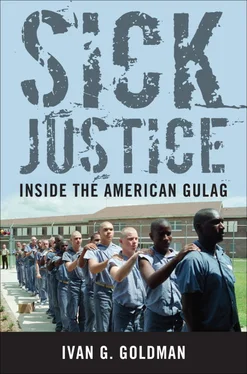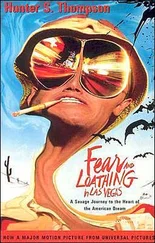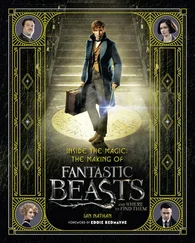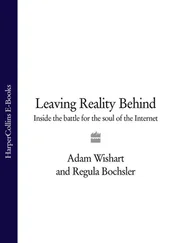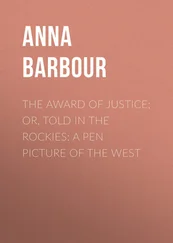Reynolds’s father, Mike Reynolds, a wedding photographer, outraged by this tragedy, began talking about his daughter in the mass media. The loquacious father became a sought-after personality on right-wing talk radio, a burgeoning force at the time. He was a perfect fit for these shows, which liked to keep issues and solutions simple. Reynolds’s simple solution: keep criminals locked up. In addition to his media blitz, he pitched his idea in the state capital, Sacramento, where he and his new political friends put together Proposition 184, Three Strikes and You’re Out.
Joining forces with Reynolds and his radio hosts was the California prison guards union, which contributed $100,000 to the cause and formed a straw group called Crime Victims United. The National Rifle Association, which seeks to fight crime by making guns and ammo more available, tossed $130,000 into the initiative drive.
The initiative process, often hailed as a great hallmark of democracy, had by this time established itself as a kind of uninformed tyranny in California. Traditionally, legislation is passed through a responsible legislative body that conducted research, held hearings, asked intelligent questions, and picked the brains of experts.
SNATCHED FROM A SLUMBER PARTY
In October 1993, sixteen months after Kimber Reynolds was murdered in Fresno, a sociopath and repeat offender named Richard Davis (no relation to Joe) snatched twelve-year-old Polly Klaas from a slumber party in a middle-class section of Petaluma, California. 15Davis, who had an amazing history of evading arrest and sensible sentencing, drove off with Klaas, almost certainly raped her, then murdered her and dumped her body at an abandoned sawmill. It was a signature evil deed, a parent’s worst nightmare.
A couple months later, after much police blundering, Davis was tracked down. He confessed and led police to where he’d stashed Polly Klaas’s body. The Klaas murder on top of the Reynolds killing had voters itching to do something, and on Election Day, the three-strikes initiative was there, just waiting for their OK. Voters approved it overwhelmingly, but few noticed that Klaas’s father had come out against it. Bereaved and crushed but nevertheless thoughtful, he was shocked by its draconian provisions.
Although California voters ultimately moderated the three-strikes law in 2012, other states continued enforcing harsher provisions. In 2013, Louisiana, for example, was still following a broad three-strikes law passed in 1994 that enabled courts to impose life terms for petty crimes, even if none of the strikes involved violence. Under the provisions of this law, James Belt was sentenced to life without parole in 1999 for selling ten dollars’ worth of crack to an undercover cop. 16He was thirty-seven and had been fighting a crack addiction for six years. His two previous convictions were for stealing a credit card from his college roommate and burglarizing a friend’s house for drug money—ugly crimes for sure, but not life-in-prison sorts of crimes. Unfortunately, no one has been able to find any mistakes in Belt’s case. Apparently the court followed the letter of the law. So Belt and others like him languish, as forgotten as the Soviet factory girls who’d been banished to the Gulag for stealing spools of thread.
7
Divine Right Prosecutors
HAD YOU CHECKED THE WEBSITE OF THE TULARE COUNTY, CALIFORNIA, DIStrict Attorney’s Office in November 2012, you’d have seen a studio portrait of a smiling, middle-aged, balding man with a closely trimmed white beard. He wore a dark suit and appropriately somber tie. A U.S. flag dangled on a pole behind his right shoulder. The man was District Attorney Phillip Cline, a member in good standing of both the local Rotary Club and Chamber of Commerce. (Cline announced his retirement in October 2012, effective in December, approximately two years before the end of his term.) Before becoming district attorney, the site would have told you, Cline “specialized in the prosecution of homicide cases and won a number of high-profile death penalty cases.” His office’s mission was “to represent the people of the State of California in an efficient, effective and ethical manner.” 1
Nowhere did the site mention that five years earlier, in 2007, a state appellate court determined that as a deputy prosecutor two decades earlier, Cline had withheld a vital audiotaped statement from a key witness that pointed to a murder defendant’s innocence. But the discovery was made too late. By that time defendant Mark Sodersten had died in prison, having served twenty-two years for a crime he almost certainly didn’t commit. Sodersten’s death turned the smothered evidence into what the law calls a moot point. However, the appellate court was so upset by the finding that it made the ruling anyway—a highly unusual decision that at least put Cline’s deeds on the record. 2Cline had sought the death penalty for Sodersten.
As it turned out, Cline’s luck held. The criminal justice system took no action against him, and the state bar association never expressed so much as mild disapproval. Thanks to Supreme Court decisions that protect prosecutors (but not police), he was immune from civil liability, accorded a legal status that mimics that of medieval monarchs who ruled their kingdoms and principalities by divine right.
The Northern California Innocence Project (NCIP), a legal group dedicated to exonerating wrongfully convicted individuals, is affiliated with the Santa Clara University School of Law. In a study of court records from 1997 to 2009, it reported that in 707 Northern California cases, courts found that prosecutors had committed misconduct. Three percent of these 707 cases went to trial, but in only six was anyone disciplined. 3There’s no reason to believe this phenomenon is peculiar to Northern California. A New York Innocence Project study found that the many cases reversed by Innocence Project offices around the country “exposed official misconduct at every level and stage of a criminal investigation.” 4Common forms of misconduct discovered include employing suggestion when conducting identification procedures; coercing false confessions; failing to turn over exculpatory evidence (although in some cases police fail to turn the evidence over to prosecutors); deliberately mishandling, mistreating, or destroying evidence; allowing witnesses to testify when authorities know or should know they aren’t being truthful; pressuring defense witnesses not to testify; relying on fraudulent forensic experts; and making misleading arguments that overstate the conclusiveness of testimony.
In the landmark case of Brady v. Maryland , the Supreme Court ruled in 1963 that prosecutors have a duty to share evidence that indicates a defendant is not guilty. 5But in case after case, prosecutors treat this decision as though it never happened. Even when a prosecutor is caught withholding evidence, nothing much happens. It’s a phenomenon that appears to have much in common with on-ice fights in the National Hockey League. If the league really wanted to end them, it clearly could do so.
The Northern California study, conducted by Kathleen Ridolfi, NCIP’s executive director, and Maurice Possley, a Pulitzer Prize–winning journalist, examined only those 3 percent of cases that went to trial. The 97 percent of cases resolved without trial nearly all ended in a guilty plea. 6These cases were no less likely to involve misconduct, but whatever transpired may as well have been on the dark side of the moon. The public sphere saw only the judge banging a gavel to pronounce the negotiated outcome.
ELECTED COURT OFFICERS
In other developed democracies, judges and prosecutors are usually appointed civil servants. But in the United States, state prosecutors are mostly elected. And although federal prosecutors are appointed, they are more likely than their European counterparts to be angling for future political office—and are therefore more inclined to seek a spotlight. Some experts believe that this politicizing of prosecutorial duties has much to do with America’s incarceration syndrome. 7Playing the role of a crusading prosecutor is a traditional political path. Campaigns for prosecutorial office can devolve into a duel decided by which candidate best exploits the voters’ fear of victimization.
Читать дальше
